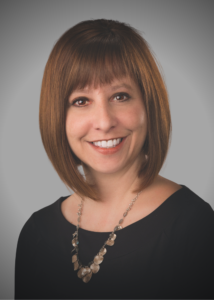For years, skilled nursing providers have pointed to career ladders as an important tool for retaining employees. But too often, moving up takes time, training or tuition money that entry-level frontline workers don’t have.

Susan Grigg, CEO of 17 skilled nursing facilities operated by the McGuire Group, VestraCare and RCA Healthcare Management/Absolut Care in New York, decided a pandemic would be a perfect time to do something about that.
Working with local colleges, Grigg’s team built an LPN apprentice program that covers all employee costs in exchange for a three-year work commitment. The ownership group either pays for the students to attend school full-time, or splits the costs 50/50 with the college through an educational loan program. There is no out-of-cost expense for employees.
Students complete all of their clinical rotations at the company’s buildings, helping to elevate staff numbers and give trainees real world experience with seniors.
The first cohort advanced nine CNAs from within the ranks, while the next two, for which candidates will be identified starting in April, will target candidates from housekeeping, dietary and beyond. Grigg hopes to include 25 workers with no previous clinical experience who want to pursue long-term career opportunities in long-term care.

“Our position is to build a culture where people want to work for us,” Grigg says. “That has been and will continue to be our priority focus. Even before the pandemic, we really had a great culture that was welcoming and open to people’s opinions and visions. …When people have ideas, it’s never, ‘No we can’t do that.’ It’s always about, how can we get it done?”
A trio of approaches
Grigg’s portfolios include three different entities, all with a different backstory. The McGuire Group features six facilities, each operating with 4- or 5-star ratings. Long Island-based VestraCare completed a purchase of those buildings in early 2021, five years after it first acquired a 20% stake in McGuire.
It was during the pandemic’s early days that VestraCare also agreed to take on management of six AbsolutCare facilities, all of them in bankruptcy and several with poor regional reputations.
A turnaround now underway there, Grigg believes investments in staffing are making the biggest differences.
“We were lucky enough, at least in the McGuire group portfolio, not to have suffered the losses that other skilled facilities had prior to the pandemic,” she says. “We can’t say the same for the Absolut/RCA facilities. They started behind the eight ball, and then the pandemic hit.”
While some buildings are working to restore staffing to hourly coverage levels considered above average for New York (at least two in the McGuire group are already there), others are taking a longer-term look at finding new job candidates.
In addition to promoting from within, Grigg is looking to establish new inroads to long-term care. The enterprise is now up to five full-time recruiters, in addition to staff members who oversee the apprenticeship program and other educational partnerships.
To cover non-clinical vacancies, she has also relied increasingly on high school-age workers who, with their school requirements, aren’t really subject to staffing agency poaching. An afterschool program gives local student workers up to 90 minutes to eat and complete homework onsite, and then they spend about three hours working in housekeeping or dietary.
But with the CNA pool has been slow to refill, she’s leaned more in the last three months toward training those younger workers in frontline caregiving.
“The more people we can drive in now, when they’re young, that’s really our goal,” she says. “Many facilities shy away from high schoolers or anybody under 18 because the rules are a little different with the Department of Labor and through OSHA. As long as we stick to those rules and we’re following them, I think it’s a great pool of people to start bringing in.”
Staff feeds programmatic advances
Across brands, none of the buildings have recently restricted admissions due to worker shortages. And that means they can be better partners to local acute-care providers, Grigg says.
“In order for us to stay ahead of the game, it’s really about bringing innovation into our facilities,” Grigg says. “That’s really always the question for us: What’s next? That’s where dialysis came in, that’s where cardiac rehab is coming in.”
Cardiac programming is a service Grigg sees as pivotal to future sustainability and, potentially, growth. Hospital executives she works with have said they can’t discharge cardiac patients as quickly as they’d like because many sub-acute care settings cannot manage defibrillator life vests or left ventricular assist device (LVAD) implants.
McGuire Group buildings are already taking those kinds of patients, and in June the company will add a new service line in conjunction with the State University of New York at Buffalo’s neurology program.
The goal is to keep patients for two to three days following spinal surgery or other procedures to help them with pain management and mobility and then coordinate their discharge to home.
Grigg concedes that’s a pretty short stay compared to what nursing homes were targeting 10 or even just five years ago. But those patients represent a reliable flow of Medicare or private-pay patients, and working with them is appealing to nurses who want more challenging opportunities.
The companies also have offered advanced cardiac life support training and cardiac telemetry training and added remote monitoring tools in tandem with educational and acute care partners. The more community partners facilities have, the more they can prepare their nurses for what’s coming through the door, Grigg says.
The aim, though, is not to blanket her facilities with too many sub-specialities, and she cautions others to follow suit. It’s better to do one program well than to be mediocre in a variety, she says.
She credits a leadership team and medical director with extensive clinical and nursing experience with ensuring her facilities have what they need to execute operationally on high-level business and strategy decisions.
“That helps us ascertain what is up and coming, what is best for our patients, and do we have the clinical capability of providing those services in house,” she says. “As long as we keep that at the forefront, our team feels like we can accomplish all of those things.”




